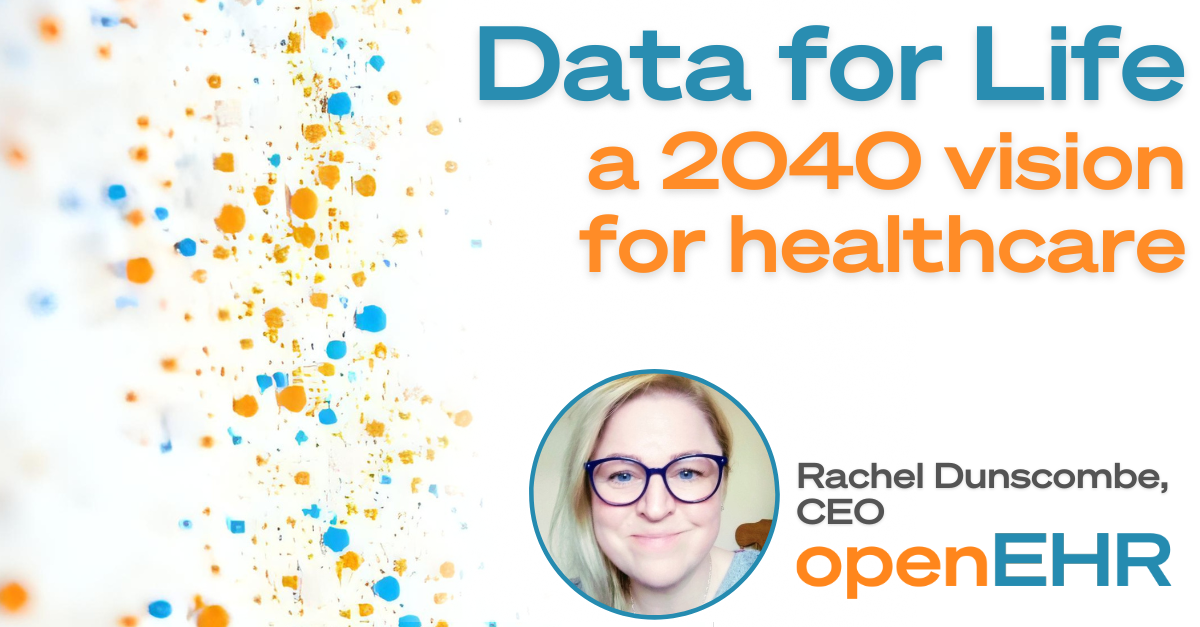What will healthcare look like in 15 years? Imagine it’s 2040. A patient’s journey is no longer a fragmented series of disconnected episodes, but a seamless, lifelong narrative. Their health data, captured from birth, flows securely between providers, powers preventative insights on their personal devices, and contributes to global research – all with their consent and control. This isn’t science fiction; it’s the destination we are actively building, and the roadmap is guided by a simple but profound principle: Data for Life.
This future was brought into sharp focus during the recent generative AI sessions with AWS in Lisbon. The power of AI to act as a clinical co-pilot, to predict disease, and to personalise treatment is truly transformative. But the key takeaway was clear: AI is only as good as the data it is trained on. To be safe, effective, and equitable, it requires a foundation of high-quality, structured, and longitudinal information. This is where the theoretical power of AI meets the practical necessity of robust data standards.
The path to creating this foundation is not one of competition, but of deep collaboration. The energy at our recent joint event with HL7 in Amsterdam, and the focus on practical implementation at the IHE event in Vienna, underscored a powerful global consensus. We are moving past the old debates and into an era of pragmatic synergy. The long-held ambitions for a single patient record and the immediate value of the International Patient Summary (IPS) are no longer just concepts; they are active, collaborative workstreams. These initiatives show we are building the bridges necessary to connect different systems, ensuring that data can be both structured for deep clinical meaning and exchanged for immediate care needs.
This collaborative work gives true meaning to the phrase “Data for Life,” which can be understood in at least four distinct ways:
- Data for a Lifetime: This is the core principle of a vendor-neutral, longitudinal health record. Your health story shouldn’t be trapped in a proprietary silo, lost every time you change hospitals or a vendor is replaced. It should be a coherent narrative that follows you for life, providing context for every clinical decision.
- Data that saves Life: This is the immediate, critical value. It’s the real-time allergy alert, the predictive model that flags a patient at high risk for sepsis, or the AI-powered diagnostic tool that spots a malignancy early. This life-saving potential is only unlocked when data is available and computable at the point of care.
- Data for a better Life: This is about patient empowerment and proactive wellness. It’s about integrating data from wearables and personal devices into a holistic view of health, enabling personalised advice, chronic disease management, and a shift from reactive sick-care to proactive healthcare.
- Data for all Life: This is the promise of research. By contributing anonymised, high-quality data to secure research platforms, every individual’s health journey can help advance medical science, leading to new treatments and better public health strategies for future generations.
The journey to 2040 is complex, but the vision is clear. The powerful engines of Generative AI, the collaborative frameworks being built with partners like HL7 and IHE, and the robust, clinician-led data models of openEHR are not separate initiatives. They are essential, interlocking components of a single mission. Together, they allow us to build systems that truly deliver on the promise of “Data for Life” – empowering longer, healthier, and better-understood lives for everyone.

Leave a Reply